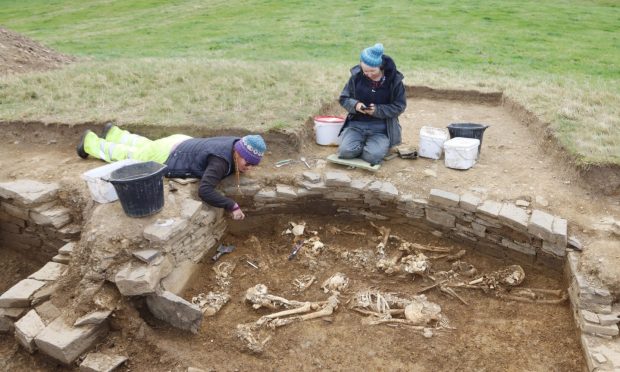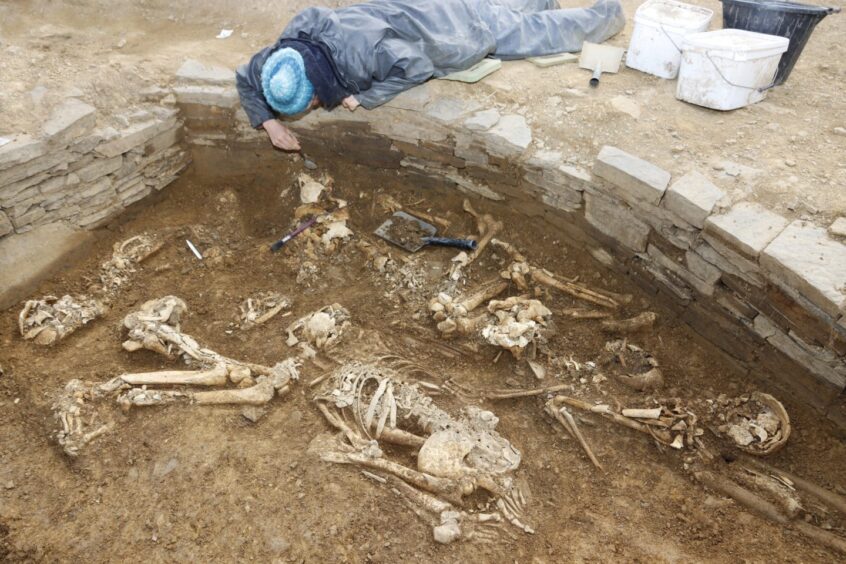Orkney archaeologists have discovered skeletons amongst the ruins of an “incredibly rare” 5,000 year old tomb.
Fourteen different remains have been found 0f men, woman and children who appear to be embracing.
The discovery was made in Holm where tombs of this type have been found in the past.
Twelve other sites similar to it have been found on the island previously.
The three-week excavation has revealed traces of a stone cairn 15m in diameter, which contained a 7m-long passage.
The passage led into a stone chamber in the centre which was surrounded by six smaller cells.
Inside, researchers found fourteen different skeletal structures encased in the tomb.
Alongside the skeletons, other human remains and artefacts including pottery, stone tools and a bone pin, were recovered from the Victorian backfill.
Buried beneath a pasture field, it had been largely been destroyed and buried in the 18th or 19th century in order to use its stone to build a nearby farmhouse.
The dig was directed by Dr Hugo Anderson-Whymark from National Museums Scotland, and Professor Vicki Cummings of Cardiff University.
‘Orkney is exceptionally rich in archaeology’
Anderson-Whymark said: “Orkney is exceptionally rich in archaeology, but we never expected to find a tomb of this size in a such a small-scale excavation.
“It’s incredible to think this once impressive monument was nearly lost without record, but fortunately just enough stonework has survived for us to be able understand the size, form and construction of this tomb.”
Prof Cummings added: “The preservation of so many human remains in one part of the monument is amazing, especially since the stone has been mostly robbed for building material.
“It is incredibly rare to find these tomb deposits, even in well-preserved chambered tombs and these remains will enable new insights into all aspects of these peoples’ lives.
‘The preservation of so many human remains in one part of the monument is amazing, especially since the stone has been mostly robbed for building material.
“It is incredibly rare to find these tomb deposits, even in well-preserved chambered tombs and these remains will enable new insights into all aspects of these peoples’ lives.”

